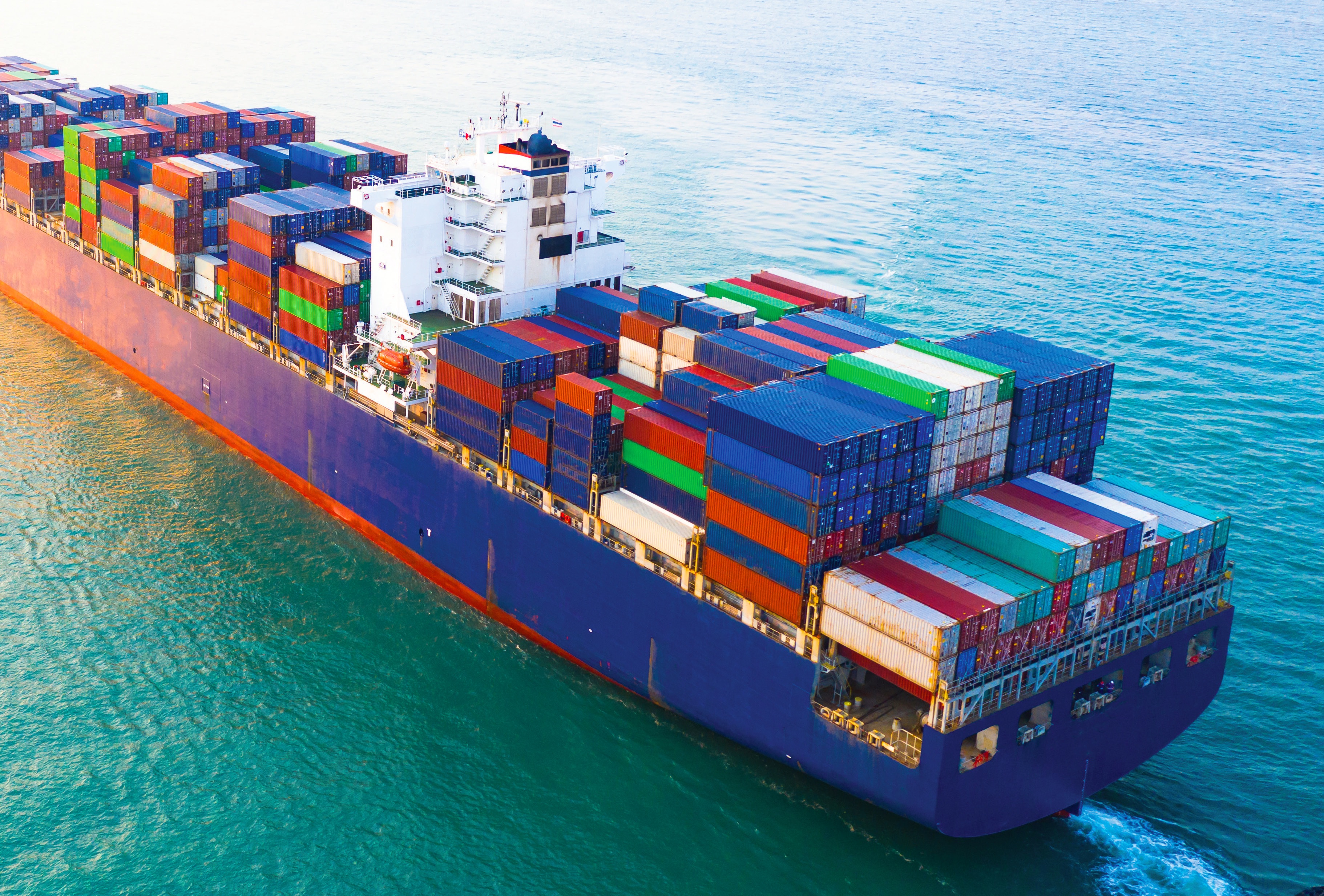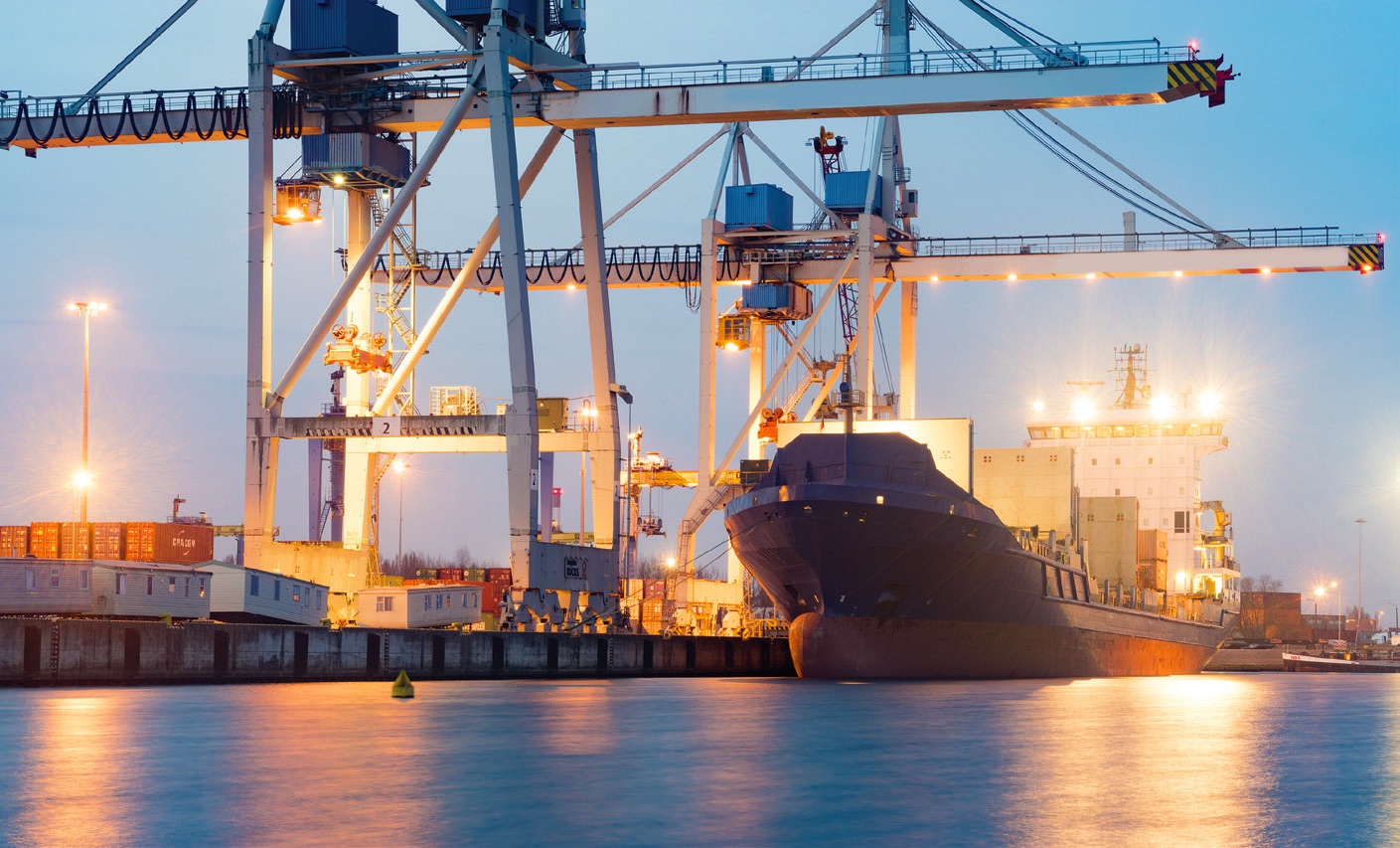
The shipping industry faced two major hurdles in 2020: the implementation of International Maritime Organization (IMO) 2020 0.5% sulfur fuel norms, also known as IMO 2020, and the COVID-19 pandemic. IMO 2020 led to operational challenges as shipping companies coped with the transition to using very low sulfur fuel oil (VLSFO) or 0.5% sulfur fuel. COVID-19 also led to some unique operational challenges, such as reduced onboard and onshore support and closed ports, as well as the economic challenges of a decline in trade volumes. Lastly, upcoming regulations like decarbonization present their own set of struggles to the shipping industry. This article will focus on the impact of these challenges on various aspects of the marine lubricants industry.
According to World Trade Organization (WTO) estimates from October 2020, world trade was estimated to decline by around 9.2% in 2020 due to the economic implications of COVID-19; it is estimated to increase by 7.2% in 2021. This is better than the estimates provided by the WTO in April 2020, which projected trade to decline between 13% and 32% in 2020. As a result, the shipping industry was not affected as much as it was anticipated in mid-2020. This difference in trade estimates for 2020 also suggests that the recovery has been rather quick, and trade growth in 2021 could be higher than the current estimates of 7.2%. However, strict lockdowns implemented in Europe for the next few months and a continuing high caseload of COVID-19 in the U.S., along with reports of lockdowns in some parts of China, could result in lower growth than anticipated.
COVID-19 did not have much impact on marine lubricants demand, as deep-sea shipping, which accounts for close to 90% of demand, was not severely affected even though world trade declined. The reason: deep-sea vessels still sailed. Marine lubricants demand from the domestic marine segment, which includes fishing, inland waterways and coastal marine, was impacted but varied from one country to another, depending upon local restrictions due to COVID-19. Given that domestic marine accounts for 10% of total marine lubricants demand, the decline in the domestic marine segment did not have much impact on the overall marine lubricant demand. Marine lubricant demand was estimated at around 2 million tonnes in 2020.
COVID-19 also provided time for marine fuel suppliers and shipping companies to work through the challenges of IMO 2020 implementation or VLSFO. The availability of VLSFO was a major issue toward the end of 2019, but as countries went into lockdowns, demand for shipping plummeted, easing the supply situation. Further, it gave marine fuel suppliers and shipping companies time to find ways to operate with issues such as compatibility and stability of VLSFO, along with issues such as catalytic fines, sludge and asphaltene falling out of VLSFO.
COVID-19 also led to changes in operations, with digitalization growing in the shipping industry. For example, onboard inspections became difficult or could not be conducted due to COVID-19 restrictions in vessels as well as at ports. As a result, marine fuel and lubricants suppliers were not able to send specialists on board and had to use digital technology to do inspections and provide various services; this reduced operational costs for suppliers. Marine lubricants suppliers are now looking at making further investments in technology to digitally provide more services to their customers. For example, Chevron Marine launched its e-commerce platform, OnePort, in 2019. The company extended its digital initiatives and launched Chevron Marine Cloud Solutions to integrate with its shipping customers’ processes and help them in online vessel management. BP Shipping also has entered into a partnership with Windward, a maritime trade analytics and insights provider, to increase digitalization in its operations.
There also are challenges for increased digitalization; the first is the issue of connectivity with the ship as well as within the ship. VSAT technology that supports bandwidth, which, in turn, ensures connectivity, is expensive. Further, it is not possible to get a consistent signal at all areas within the ship, with some areas getting no signal at all. Secondly, old IT equipment in ships is a limiting factor for digitalization. Third: the durability of IT equipment. For example, IT equipment cannot be installed in some areas of ships, limiting connectivity. Lastly, cybersecurity will become important as digitalization becomes prevalent in the shipping industry. IMO also implemented its 2021 regulations mandating that ships with more than 500 gross tonnage include cybersecurity in safety management systems starting Jan. 1, 2021.
According to MarLink, 34,000 commercial vessels had VSAT capabilities in 2020; this is expected to increase to 80,000 vessels by 2029. As digitalization grows, the importance of providing services digitally will grow and could become a differentiating factor for marine lubricants suppliers. This could reverse the trend of local suppliers gaining market share from global suppliers in the marine lubricants industry, as global suppliers have the necessary resources to make the investments, while not all local suppliers do.
The other key change in the shipping industry was the implementation of IMO 2020. The fuel sulfur content was reduced from 3.5% to 0.5% on Jan. 1, 2020. Most of the vessels (90%-95%) are currently operating on VLSFO. There were other options, such as using LNG as fuel and retrofitting vessels with scrubbers. However, most vessels have opted for VLSFO due to a lack of LNG infrastructure globally, plus uncertainty about scrubbers’ capability of meeting any future fuel norms if and when they are changed.
Due to the introduction of VLSFO, the market for marine engine oils has changed significantly. For example, for cylinder oil 70 base number (BN) and 100 BN were the main types used for 3.5% sulfur fuel. However, 40 BN cylinder oil became the main type of cylinder oil as VLSFO became the main type of fuel.
VLSFO also has led to changes in lubrication practices. It was observed that the existing 40 BN cylinder oil was not enough for keeping piston rings and crowns clean and that there is a need for a 40 BN cylinder oil with better detergency. For the time being, shipping companies are mostly using 40 BN cylinder oil but also use 100 BN cylinder oil for a short period to remove deposits. However, this is mostly done for engines in newer vessels that are more efficient. MAN also revoked its approval for 15-25 BN cylinder oils and recommended vessel owners using Mark 9 and higher engines to alternate between category I 40 BN and category II 100 BN cylinder oil, if needed, as described earlier.
MAN also has segregated the cylinder oils into category I and category II. Category II cylinder oils have better cleaning capability than category I oils. Currently, category II oils are available for 100 BN and 140 BN. Companies are working to develop category II 40 BN cylinder oils, and it is estimated that category II 40 BN oils will be available some time in 2021.
This development is expected to lead to the decoupling of the BN and detergency for cylinder oils. Until now, BN was the main criteria based on which cylinder oil was selected. BN also was seen as a factor by which to judge the detergency of the cylinder oil. But due to VLSFO, the need for higher BN or having higher acid neutralization capacity is reduced; however, there is a need for higher detergency, as can be seen from the current practice of alternating between 40 BN and 100 BN cylinder oils. This will have implications for cylinder oil selection in the future as detergency becomes more important than acid neuralization. This increases the complexity in the marine lubricants industry and also provides an opportunity for marine lubricants suppliers to increase their share in this industry. At the same time, this increases the barriers to entry for suppliers in the marine lubricants industry. Further, it provides an opportunity for additive suppliers to develop dispersants to meet these future requirements.
The next challenge that the shipping industry is expected to face is the decarbonization 2030 and 2050 norms. These norms aim to reduce the average carbon intensity (CO
2 per tonne-mile) by a minimum of 40% by 2030 and 70% by 2050 compared to 2008. Further, greenhouse gas emissions need to be reduced by 50% by 2050 compared to 2008. One of the ways the shipping industry is looking to meet these norms is by using low-carbon fuels. Various fuels that are being tried right now include ammonia, methanol, LPG, hydrogen and electricity. Currently, these new fuels are being tested or used in some vessels, but the overall usage remains low.
 The marine lubricants industry is expected to change and become more complex in the future.
The marine lubricants industry is expected to change and become more complex in the future.
The usage of different fuels is expected to change the shipping industry even further. The shipping industry, especially deep-sea shipping, has remained predominantly dependent on one type of fuel so far. Before 2020, the industry was mainly using heavy fuel oil, with LNG having some share. Since Jan. 1, 2020, the shipping industry has shifted to VLSFO, with VLSFO having a 90%-95% share, followed by some share for LNG. It is expected that as the shipping industry gains experience with new fuels and the supply infrastructure for these new fuels grows, it will transform from a predominantly single fuel type to multiple fuel types.
However, it must be noted that it is expected to take around 20 years (i.e., until 2040) for new fuels to have a significant share in the shipping industry. Adoption of new fuels will grow gradually, with respective fuel vessels adopting these new fuels first. For example, LPG vessels will adopt LPG, while ammonia vessels will adopt ammonia. The adoption will start with dual-fuel engines that can run on VLSFO and any of the new fuels depending upon the type of engine.
This is expected to have implications for marine lubricants suppliers, as new engine oils that are compatible with new fuels might need to be developed. Currently, for dual-fuel engines, vessels are using the engine oil meant for VLSFO, but eventually, as vessels run on only new fuels, new engine oils compatible with these fuels might be needed. This also is expected to increase the entry barriers for marine lubricants suppliers in this industry.
Technology trends such as 3D printing and nearshoring of manufacturing also present a challenge to the shipping industry, especially due to COVID-19. These trends have the potential to reduce the need for shipping, negatively impacting the marine lubricants demand. Further, engines are expected to become more efficient, leading to higher demand for better-quality marine lubricants but overall lower demand. Based on the aforementioned trends, it is expected that marine lubricants demand will decline at an annual rate of about 1% until 2025. At the same time, marine lubricants demand will experience value growth as demand shifts toward better-quality lubricants.
In conclusion, the marine lubricants industry is expected to change and become more complex in the future as the industry shifts toward multiple fuels and category I and II marine engine oils. The industry also will be affected by the growing importance of detergency over acid neutralization for marine engine oils and increased demand for better quality marine engine oils. The increased adoption of digital technologies will impact lubrication-related services. This is expected to increase the entry barriers for new and regional suppliers in the industry while providing opportunities to existing suppliers.
Kunal Mahajan is project manager, Kline Energy at Kline & Co. You can reach him at kunal.mahajan@klinegroup.com.
Kline is an international provider of world-class consulting services and high-quality market intelligence for industries including lubricants and chemicals. Learn more at www.klinegroup.com.